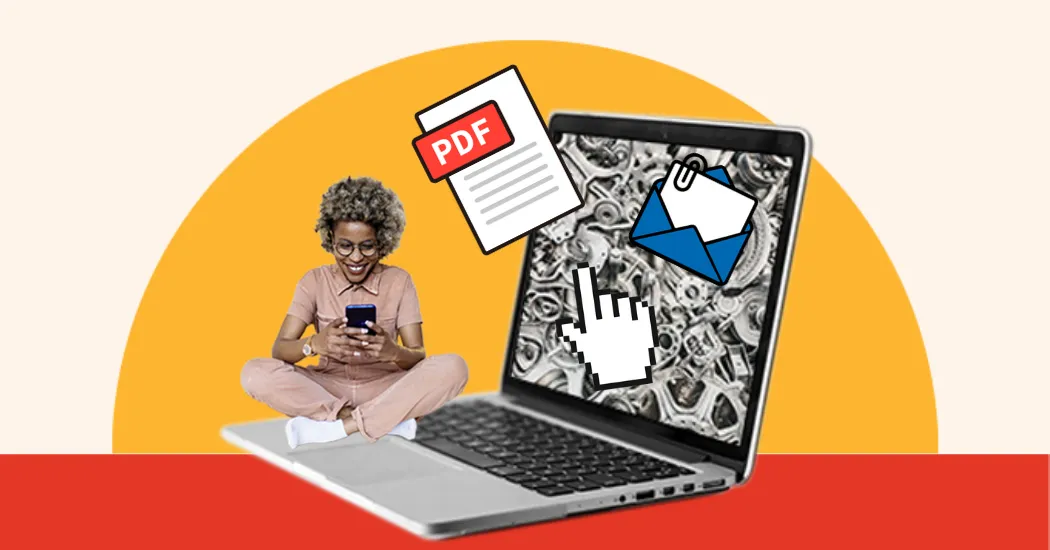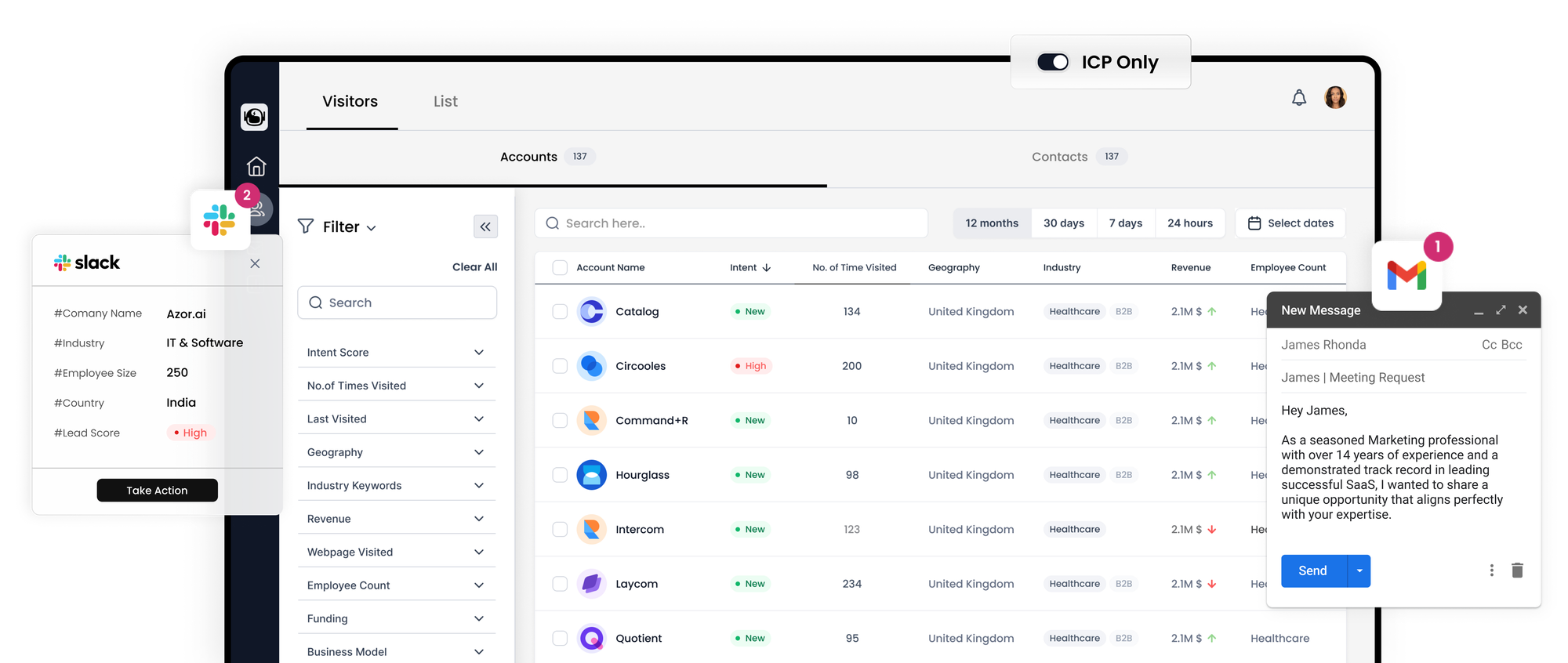The Ultimate Guide to B2B Sales Automation

B2B sales automation can significantly enhance productivity and efficiency, leading to increased profits. However, it’s crucial to strike the right balance. While automating routine tasks like administration, data entry, and analytics can be a game-changer, the nuanced, relationship-building aspects of B2B sales still require a human touch.
Top-tier sales organizations excel by integrating technology and human skills effectively.
As experts in B2B sales automation, we’ve assisted many B2B enterprises in implementing automation to humanize their sales approach more effectively.
Understanding B2B Sales Automation
B2B sales automation employs digital tools and AI to execute routine sales tasks and manage data analysis.
When executed properly, it enhances sales workflows, raises productivity levels, and fosters genuine sales engagement by allowing sales professionals to focus on meaningful interactions with buyers.

Successful businesses leverage sales automation to:
- Handle administrative tasks, CRM updates, sales tracking, and customer engagement documentation.
- Streamline and refine lead generation, qualification, and scoring processes.
- Automate personalized communication at scale, such as follow-up sequences post-demonstration.
- Schedule appointments efficiently.
- Implement workflows that keep sales reps on track.
- Provide timely follow-up reminders.
- Simplify the organization and customization of sales materials and proposals.
- Analyze messaging effectiveness and team performance.
- Improve data quality and provide valuable insights.
- Cultivate top-tier sales teams that attract high-caliber talent.
By delegating these responsibilities to automated systems, human sales reps are empowered to personalize interactions and cultivate relationships, thereby improving sales outcomes.
Importantly, automation should be invisible to prospects. Interactions must feel personalized and genuine, focused on addressing their needs rather than making aggressive sales pitches.
The Imperative for B2B Sales Automation
The sales landscape has evolved, with informed customers now steering their purchasing journey. They conduct thorough research and demand sellers to provide clarity and guidance, serving as trusted advisors.
The digital transformation of sales means that the buyer’s journey is increasingly online, with their digital interactions offering invaluable insights. Leveraging data on customer demographics, preferences, and behaviors enables sales teams to understand funnel trends, generate and qualify leads, engage proactively, and forecast with greater accuracy.
Sales professionals must be prepared to engage effectively across multiple channels and touchpoints, from video conferences and phone calls to social media engagement and tailored sales presentations.
A prime example is Aircall, a customer who recognizes the need for sellers to facilitate the buying process, making it simpler and more efficient for clients, all while maintaining the essential human element.
In a market skeptical of impersonal marketing tactics, sellers must invest time in building relationships with prospects. This is impossible if they’re bogged down with manual data entry, tracking down collateral, or juggling schedules. Sales automation frees them from these tasks, enabling them to focus on what they do best—selling.
The Advantages of Implementing B2B Sales Automation
Integrating B2B sales automation into your business strategy offers a myriad of benefits, significantly enhancing the efficiency and impact of your sales processes. Here’s how:
1. Boosts Efficiency by Automating Routine Tasks
Automating mundane tasks not only saves time but also reduces the chances of human error. It streamlines your sales efforts, from data entry to lead nurturing, thus cutting down on the cost of sales operations.
2. Humanizes Business Interactions
By offloading rote work to automation tools, sales reps can dedicate more time to engaging with customers in meaningful ways. This approach fosters genuine connections, paving the way for deeper customer relationships.
3. Increases Customer Engagement
More face-to-face time, or direct communication with customers, means they receive the attention they crave, enhancing overall customer satisfaction and engagement.
4. Minimizes Friction in Sales Communications
Automation can help disrupt established patterns in customer behavior, making them more receptive to your outreach efforts. This can result in better engagement rates and more successful calendar bookings.
5. Elevates Prospecting Efficiency
With the ability to automatically nurture and score leads, your team can focus their energies on the most promising prospects, personalizing outreach at a scale that would be impossible manually.
6. Optimizes Sales Workflows
Automated sales processes are more reliable and less prone to errors or oversights. They provide a framework that ensures consistency, which is especially beneficial when onboarding new sales team members.
7. Keeps Sales Teams Organized
Sales automation tools help in managing and nurturing prospects over extended periods, keeping all necessary parties informed and engaged throughout the sales cycle.
8. Facilitates Seamless Transition Between Teams
Automated systems ensure smooth handoffs between different sales roles, such as SDRs, AEs, and CSMs, which is crucial in maintaining momentum and continuity in the sales process.
9. Provides Insightful Sales Activity Overviews
With a clearer picture of sales activities and pipeline health, you can easily spot potential opportunities and deals that may require intervention, allowing for proactive management of the sales funnel.
10. Improves Data Accuracy for Forecasting
Clean and well-maintained data through automation lead to more accurate sales forecasts, enabling better strategic planning and resource allocation.
11. Automates Customer Retention Efforts
Automation isn't just for acquiring new customers; it’s also effective in re-engaging existing customers, helping to unlock additional revenue opportunities through upselling or cross-selling.
B2B vs. B2C Sales Automation: Key Differences
The B2B sales landscape is distinct from B2C in several ways, including a typically longer sales cycle and a more nuanced balance between automated processes and human interaction.
B2C Sales:
In B2C sales, marketing efforts dominate, often utilizing tools like Mailchimp for widespread email campaigns. The sales cycle is usually shorter and involves less direct human interaction, with customers often directed to a landing page for a straightforward purchase. Repeat transactions may be infrequent, with loyalty playing a less critical role.
Human Involvement in B2C:
Human involvement in B2C sales is more about lead research and setting up automated campaigns. Tools like Lusha or LinkedIn help build leads lists, while email automation facilitates regular communication.
Time-Saving B2C Tools:
B2C sales benefit from a range of automation tools that:
- Gather and analyze customer data such as demographics and purchasing behavior.
- Employ automated dialers to manage call queues efficiently.
- Use automated text messaging to engage customers.
- Schedule social media posts and set up automated emails based on customer interaction.
B2B Sales:
Conversely, B2B sales require extensive nurturing, with multiple stages including discovery calls, customized demos, and detailed proposals. Sales professionals must maintain attentiveness and personalize communication to cater to each prospect’s unique needs and timing.
In summary, while B2C sales automation focuses on reaching a broad customer base with minimal personalization, B2B sales automation combines technology with personalized human interaction to build relationships and guide prospects through a more complex sales journey.
B2B Sales Automation Across the Sales Lifecycle:
Prospecting
B2B sales automation enhances the prospecting process through tools that verify company and contact details, prioritize leads, and facilitate immediate follow-up to prospect interactions. Calendar scheduling tools also streamline meeting arrangements, removing the hassle of manual coordination.
Selling
Sales automation enables AEs to engage prospects effectively by leveraging real-time data for personalized communication. This includes:
- Automated email sequences for consistent nurturing.
- Workflow automation to guide reps on the next steps.
- Instant notifications for prompt follow-ups based on prospect activities.
- Call recording and analysis tools for performance insights.
- Sales enablement platforms for timely access to sales materials.
- CRM synchronization for accurate sales activity logging.
Closing
Automation tools send immediate alerts and expedite the contract review and approval process, aiding AEs in swiftly securing commitments. Tools for configuring quotes and drafting proposals also expedite the final stages of the sales process.
Renewal
CSMs can employ automation to regularly engage with customers, ensuring a smooth renewal process and enhancing customer retention.
Expansion
Insights from customer data inform targeted upselling or cross-selling strategies. Automated reminders can prompt reps to seek referrals, furthering business growth.
Implementing B2B Sales Automation
The key to successful B2B sales automation is utilizing technology for its strengths while preserving the human touch where it's most impactful. To embark on this journey:
1. Map existing workflows to identify automation opportunities that enhance interactions at scale.
2. Pinpoint and automate repetitive tasks that won't detract from the customer experience, such as data entry and lead management.
3. Develop a clear action plan with measurable goals and ROI indicators.
4. Engage your teams in selecting user-friendly automation tools that address their challenges.
5. Choose technologies that integrate seamlessly with existing tools and support your team's roles.
6. Opt for a streamlined tech stack that meets your objectives without overwhelming your reps.
7. Continuously test and refine your toolset to ensure it aligns with performance improvements.
8. Regularly reassess your digital strategy to ensure it's facilitating your desired outcomes.
Remember, sales automation is a tool to bolster performance, not a standalone solution. True engagement and sales success stem from a strategic and thoughtful implementation of technology in harmony with your sales team's human skills.
